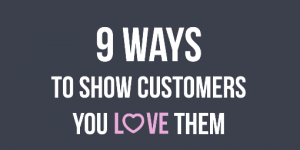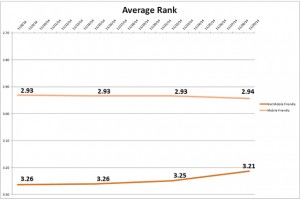When faced with the prospect of increasing profitability, many companies are at a loss. Oftentimes, the only surefire way involves painful cuts. Cutting corners on quality of materials or laying off staff happen more than most C-level executives would probably care to admit.
With a little bit of creativity, there are some areas of your business you can turn your focus to and improve to increase your profitability without dramatically altering your product or the fabric of your company. Let’s take a look.
Focusing On The Sales Funnel
What better place to start than the beginning? If you look at how you are drawing in (or repelling) leads and improve on your methods, you can increase sales and profitability of your sales funnel. Consider:
- Improving your design. Making your website and product pages more user-friendly can increase the amount of time visitors spend on your site, and potentially the amount of money that they spend. If your pages are difficult to navigate it could be frustrating visitors who leave instead of being converted into sales.
- Adding upsells. Whether you have different tiers of the same type of product (i.e. good, better, best) or groups of products that sell well together, you can encourage your customers to spend a little more by adding upsell or cross-sell opportunities.
- Adding exit-intent pop-ups. If you have a hunch that there’s something discouraging visitors from your site or encouraging them to leave, an exit-intent pop-up is a great way to find out.
- Optimizing abandoned cart emails. If you’re not sending abandoned cart emails you should start, and if you are, consider optimizing them to be more persuasive and personalized.
Focusing on Workflow and Process
As we chug along and focus on product development, marketing, and sales, we often forget to take a look at our own processes and workflow to see what changes can be made. When you turn inwards to improve your own company, think about:
- Making remote work permanent. Your team(s) are probably working remotely now, and you may have already had some remote workers before the pandemic. Consider making your team permanently remote and majorly cutting down the costs of keeping an office. A study from Global Workplace Analytics shows that companies save approximately $ 11,000 per year, per person who works remotely half time.
- Run the numbers on in-house vs. contract work. Whether your employees are in-house, agency, contract, or a mixture of all three, do the math on if you’re getting the best bang for your buck. You may not have enough graphic design work to have an in-house designer, but working with a contractor for a set amount of hours each month could be worth it.
- Automate, automate, automate. There is no bigger waste of a person’s time than a task that is boring and repetitive, and those types of tasks are the best fit for automation. Any repetitive process that your employees are doing AI could do better, and their talents are better spent on the more interesting and engaging parts of their job – which will be more likely to make more money anyway.
Focusing on the Customers
How are you targeting your current customers, and how are you encouraging them to come back? Take a look at your current strategy and consider:
- Segmenting (or further segmenting) your customers. We all know there are many types of customers, and you’ll never appeal to all of them. However, it’s worth detailing the types you are trying to appeal to, and creating distinct categories for them. Once you have proper segments, you can create marketing campaigns specific to drawing in one or two segments of customers.
- Creating a loyalty program. Our best customers are our returning customers – it means they love our product and they’re more likely to leave reviews and recommend us to their friends. Rewarding their loyalty with a program that awards points or discounts can encourage even more of your current customers to be more loyal to you.
Focusing on Inventory Management
The way in which your products are ordered, stored and shipped out oftentimes gets buried beneath lots of other processes, but there are savings to be found if you optimize inventory management.
- The initial placement of goods in your warehouse makes a big difference when it comes to speed and flow of inventory management. Revising your putaway process for optimal efficiency is a surefire way to save valuable time on order fulfillment and processing.
- Especially because of COVID-19, some companies have revised their planning. This involves changes such as switching demand forecasting to zero-based models, and dedicating resources or personnel into monitoring and predicting bullwhip effects due to COVID-related disruptions.
Don’t lose sight of the goal
The challenge of hitting profitability when economic growth is positive is hard enough; as things slide into recession, it only will get more difficult. That’s why it’s so important to think not just about how you can increase sales, but how you can cut costs. The key is doing it without hurting the parts of your business that make it worth something in the first place.
Digital & Social Articles on Business 2 Community
(42)








